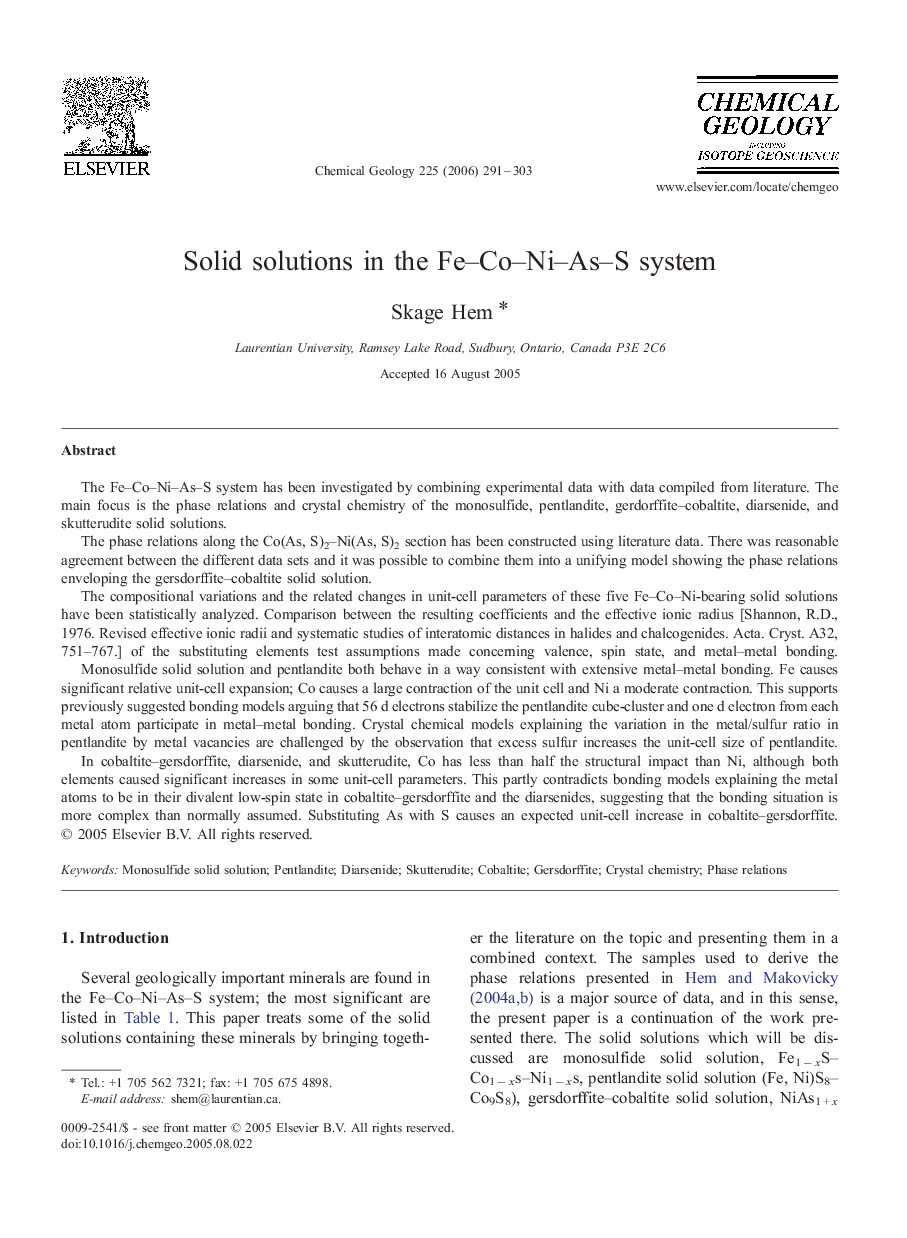| کد مقاله | کد نشریه | سال انتشار | مقاله انگلیسی | نسخه تمام متن |
|---|---|---|---|---|
| 4701299 | 1637776 | 2006 | 13 صفحه PDF | دانلود رایگان |

The Fe–Co–Ni–As–S system has been investigated by combining experimental data with data compiled from literature. The main focus is the phase relations and crystal chemistry of the monosulfide, pentlandite, gerdorffite–cobaltite, diarsenide, and skutterudite solid solutions.The phase relations along the Co(As, S)2–Ni(As, S)2 section has been constructed using literature data. There was reasonable agreement between the different data sets and it was possible to combine them into a unifying model showing the phase relations enveloping the gersdorffite–cobaltite solid solution.The compositional variations and the related changes in unit-cell parameters of these five Fe–Co–Ni-bearing solid solutions have been statistically analyzed. Comparison between the resulting coefficients and the effective ionic radius [Shannon, R.D., 1976. Revised effective ionic radii and systematic studies of interatomic distances in halides and chalcogenides. Acta. Cryst. A32, 751–767.] of the substituting elements test assumptions made concerning valence, spin state, and metal–metal bonding.Monosulfide solid solution and pentlandite both behave in a way consistent with extensive metal–metal bonding. Fe causes significant relative unit-cell expansion; Co causes a large contraction of the unit cell and Ni a moderate contraction. This supports previously suggested bonding models arguing that 56 d electrons stabilize the pentlandite cube-cluster and one d electron from each metal atom participate in metal–metal bonding. Crystal chemical models explaining the variation in the metal/sulfur ratio in pentlandite by metal vacancies are challenged by the observation that excess sulfur increases the unit-cell size of pentlandite.In cobaltite–gersdorffite, diarsenide, and skutterudite, Co has less than half the structural impact than Ni, although both elements caused significant increases in some unit-cell parameters. This partly contradicts bonding models explaining the metal atoms to be in their divalent low-spin state in cobaltite–gersdorffite and the diarsenides, suggesting that the bonding situation is more complex than normally assumed. Substituting As with S causes an expected unit-cell increase in cobaltite–gersdorffite.
Journal: Chemical Geology - Volume 225, Issues 3–4, 31 January 2006, Pages 291–303